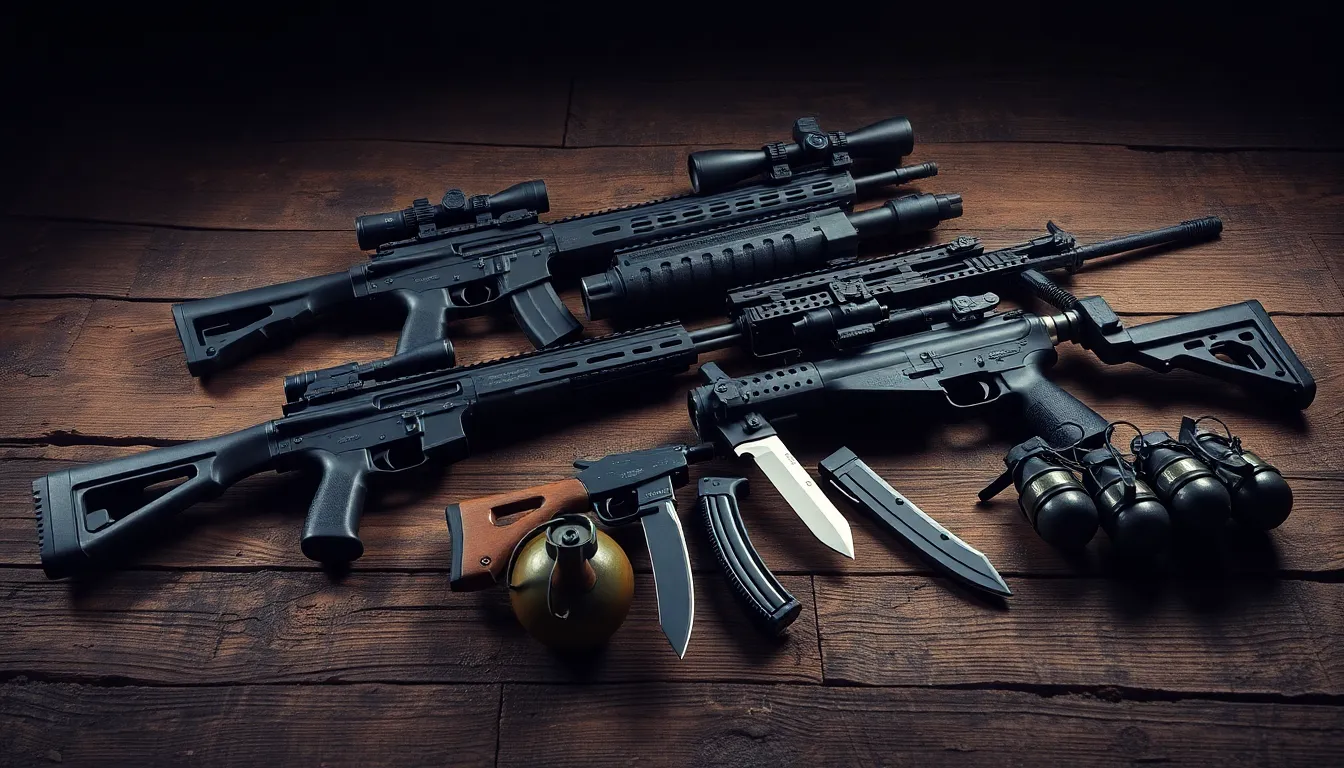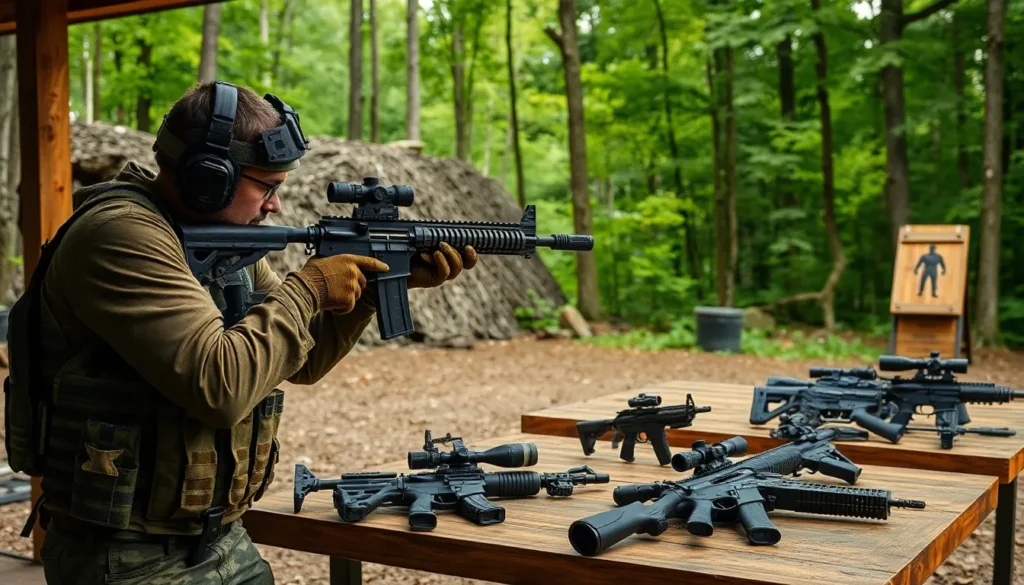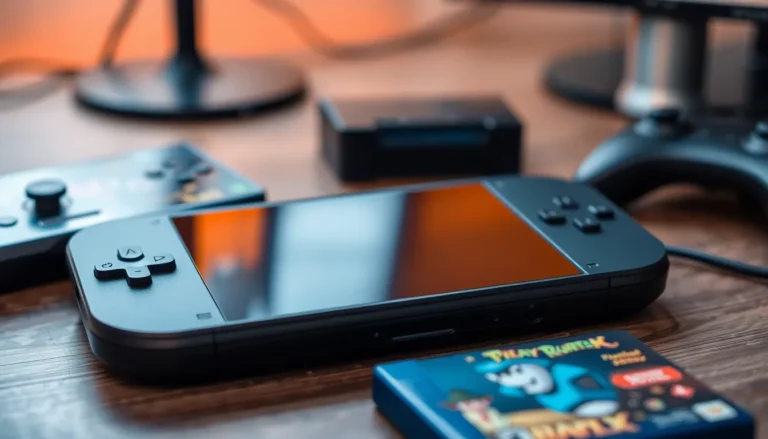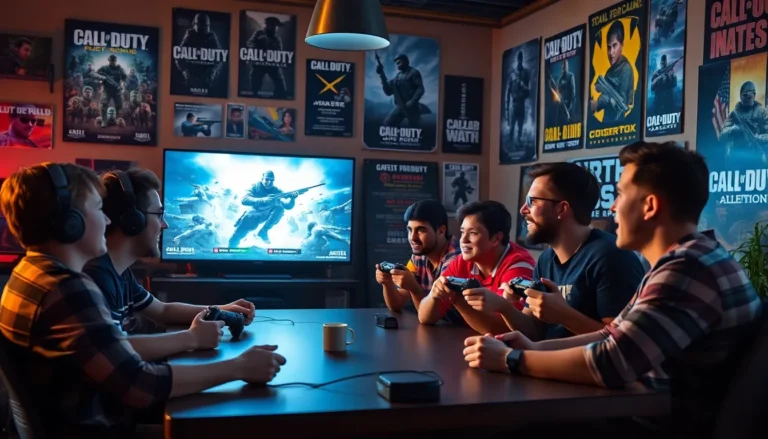Table of Contents
ToggleIn the fast-paced world of first-person shooters (FPS), weapons play a crucial role in shaping gameplay and strategy. From the iconic assault rifles to stealthy sniper rifles each weapon offers unique advantages and challenges that can make or break a player’s success. Understanding the diverse range of FPS weapons not only enhances a player’s experience but also elevates their gameplay.
As gamers dive into various titles they often find themselves drawn to specific weapon types that align with their playstyle. Whether it’s the thrill of wielding a shotgun in close-quarters combat or the precision of a long-range rifle each choice impacts tactics and team dynamics. This article explores the essential FPS weapons that define the genre and provides insights into their strengths and weaknesses, helping players make informed decisions on their virtual arsenal.
Overview of FPS Weapons
FPS weapons play a crucial role in shaping gameplay mechanics and player strategies. These weapons range from firearms like assault rifles, submachine guns, and shotguns to specialized tools such as sniper rifles and grenade launchers. Each type of weapon presents unique characteristics, influencing player performance and decision-making.
Types of Weapons
- Assault Rifles:
- Known for versatility and balance.
- Suitable for mid to long-range combat.
- Examples include the M4A1 and AK-47.
- Submachine Guns (SMGs):
- Offer high rates of fire and mobility.
- Effective in close-quarters engagements.
- Popular models include the MP5 and Uzi.
- Shotguns:
- Deliver powerful short-range blasts.
- Ideal for close encounters and breach scenarios.
- Examples consist of the M1014 and SPAS-12.
- Sniper Rifles:
- Excel in long-range precision shooting.
- Often require skill and patience from players.
- Well-known options are the AWP and Kar98k.
- Heavy Weapons:
- Include machine guns and explosives.
- Cause area damage and suppress enemies.
- Notable examples include the M249 and RPG.
Weapon Attributes
- Damage: Varies by weapon type and range.
- Rate of Fire: Influences the consistency of damage output.
- Recoil: Affects shot accuracy during sustained fire.
- Reload Speed: Impacts combat readiness and timing.
Understanding these weapon types and their attributes enhances a player’s tactical approach and team integration. Players often select weapons that align with their gameplay style, whether they prefer aggressive offensive roles or strategic support positions.
By mastering the strengths and weaknesses of FPS weapons, players can significantly improve their in-game effectiveness, leading to better overall performance in various gaming scenarios.
Types of FPS Weapons

FPS games feature various weapon types, each with its unique characteristics, offering players distinct tactical advantages and challenges. Understanding these weapon categories enhances gameplay strategies and player performance.
Firearms
Firearms in FPS games primarily include assault rifles, submachine guns, shotguns, and sniper rifles.
- Assault Rifles: Known for versatility, assault rifles like the M4A1 or AK-47 provide a balance of accuracy, rate of fire, and damage, suitable for mid-range combat.
- Submachine Guns: Examples include the MP5 or UMP45, which excel in close-quarters combat due to high rates of fire and manageable recoil, making them ideal for aggressive playstyles.
- Shotguns: Weapons such as the Remington 870 offer devastating close-range damage, compensating for low range and slower reload times, effective in tight maps.
- Sniper Rifles: High-damage and precision are the hallmarks of sniper rifles like the AWP or Dragunov, allowing players to eliminate targets from long distances but requiring skill and patience.
Melee Weapons
Melee weapons provide a unique aspect of gameplay, focusing on close-range combat without ammunition constraints.
- Knives: Often the primary melee weapon, knives allow quick, silent kills, providing an element of stealth in gameplay.
- Machetes and Swords: These options usually offer higher damage than knives but may require more player skill to use effectively.
- Special Weapons: Items like crowbars or baseball bats may appear, adding diversity and unique interactions in gameplay.
Explosive Weapons
Explosive weapons can change the tide of battle, enabling players to engage multiple enemies or destroy obstacles.
- Grenades: Hand grenades explode after a short fuse, causing damage to nearby players. Variants include frag grenades for area damage and smoke grenades for concealment.
- Rocket Launchers: Weapons like the RPG-7 deal high damage, perfect for taking out vehicles or groups of enemies, often offering a one-shot kill potential.
- C4 and Claymore Mines: These explosives allow players to set traps, offering strategic advantages by controlling enemy movement in specific areas.
Popular FPS Weapons in Games
Weapons in FPS games vary in type and functionality, each contributing to gameplay strategies. Understanding these weapons enhances player effectiveness and enjoyment.
Classic Weapons
Classic weapons include iconic firearms and melee tools that have stood the test of time, frequently appearing across various FPS titles.
- Assault Rifles: Weapons like the M16 and AK-47 provide a balance of range and firepower. They excel in most combat situations, offering versatility for players.
- Submachine Guns: Classic models such as the MP5 and Uzi emphasize a high rate of fire, ideal for close-quarters engagements. These weapons enable quick maneuvering and rapid target acquisition.
- Shotguns: Weapons like the Remington 870 deliver devastating firepower at close range. Their stopping power makes them effective for ambushes and close confrontations.
- Sniper Rifles: Classics like the Dragunov and Barrett .50 cal allow for precision from a distance. Players can eliminate targets effectively with one well-placed shot.
- Melee Weapons: Items such as the combat knife provide silent takedown options. They favor stealthy players and can conserve ammunition in high-tension scenarios.
Modern Innovations
Modern weapons incorporate advanced technology and design, enhancing gameplay experiences and pushing the boundaries of accuracy and firepower.
- Energy Weapons: Innovations like plasma rifles and laser guns offer unique gameplay dynamics. These futuristic weapons often deal damage over time and can pierce through cover.
- Customizable Firearms: Modern FPS games enable players to customize weapons with attachments and skins, tailoring performance to specific playstyles. Customization can optimize fire rate, recoil, and accuracy.
- Hybrid Weapons: Systems that integrate both firearms and melee components allow players to adapt to situations dynamically. Examples include shotguns with bayonets or guns that switch between semi-automatic and full-auto fire modes.
- Smart Weapons: Some games feature weapons with tracking capabilities. These can lock onto targets, improving hit chances, especially in fast-paced environments.
- Explosive Devices: Innovations like drones equipped with explosives or remote-controlled grenades add tactical depth. Players can create diversions or engage enemies without direct confrontation.
Weapon Customization and Upgrades
Customization and upgrades play a crucial role in enhancing the performance of weapons in FPS games. Players can modify their arsenal to fit their preferred playstyle and sharpen their combat effectiveness.
Attachments and Modifications
Attachments significantly alter a weapon’s capabilities. Players can customize firearms with scopes, barrels, grips, and magazines. Each modification offers specific advantages:
- Scopes enhance aiming precision, particularly for long-range engagements.
- Barrels can reduce recoil or increase accuracy, influencing overall stability during firing.
- Grips improve handling and aim speed, benefiting rapid engagements.
- Magazines increase ammunition capacity or improve reload speed, ensuring sustained fire.
These attachments allow players to tailor their weapons for different scenarios, maximizing effectiveness in various combat situations.
Balancing Gameplay
Balancing gameplay through weapon customization ensures a fair competitive environment. Developers often implement systems that restrict certain upgrades to maintain game integrity. This process includes:
- Damage variations to mitigate excessive power from fully upgraded weapons.
- Recoil adjustments that cap the accuracy of highly modified firearms.
- Rate of fire controls that prevent rapid-fire setups from dominating matches.
Through these balancing measures, game developers foster diverse playstyles while preventing a singular weapon from overshadowing others in utility. This promotes teamwork and strategic diversity, enriching the overall gaming experience.
Understanding the diverse range of FPS weapons is crucial for any player looking to enhance their gaming experience. Each weapon type offers unique advantages that can significantly impact gameplay and strategy. By mastering these tools and customizing them to fit individual playstyles, players can elevate their performance and contribute effectively to their team’s success.
The dynamic nature of FPS weapons encourages players to experiment and adapt, ensuring that no two gaming sessions are ever the same. As the gaming landscape continues to evolve with new innovations, staying informed about weapon characteristics will remain essential for achieving victory in the fast-paced world of first-person shooters.





